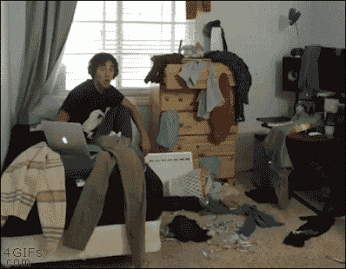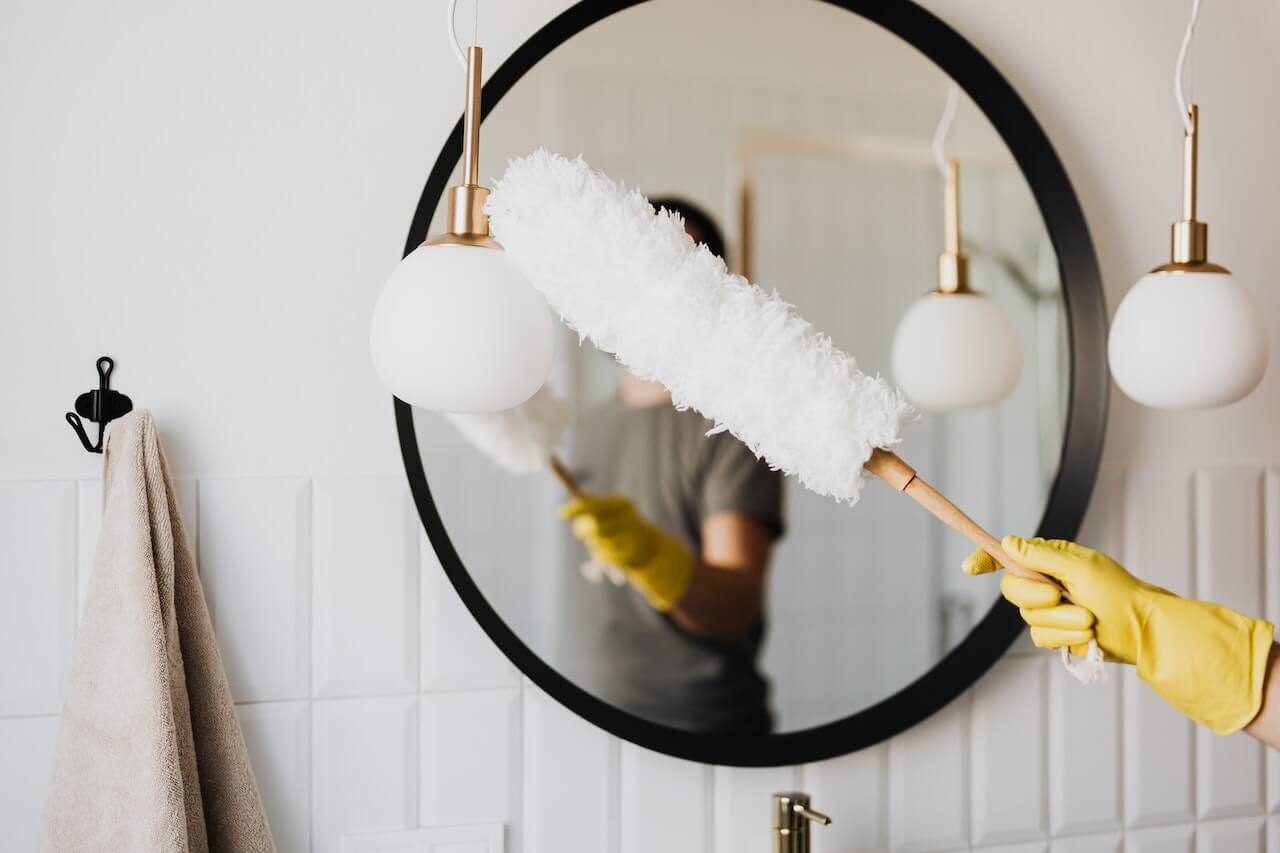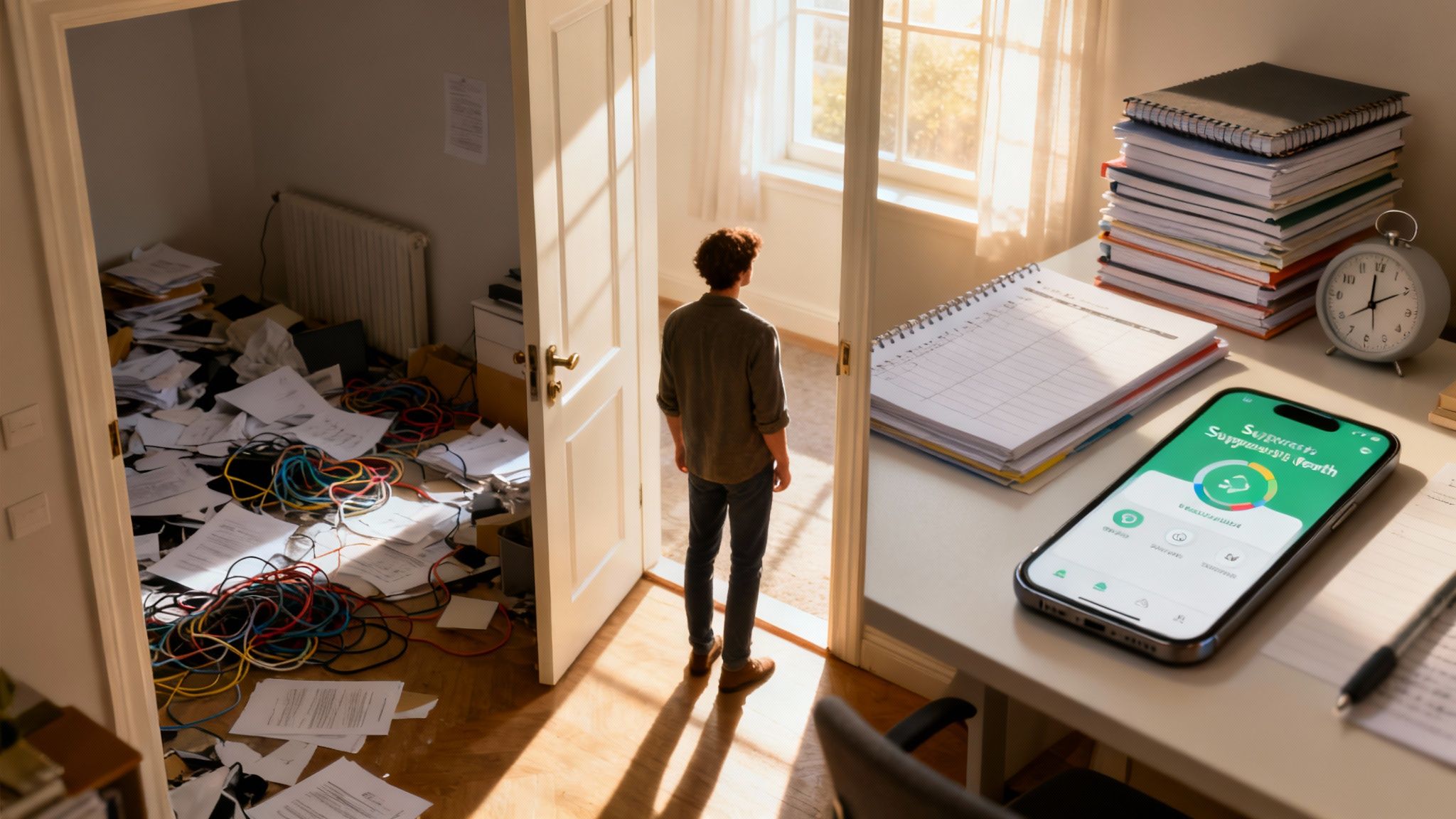Cleaning with ADHD can be an uphill battle. When the going gets tough and executive dysfunction sets in, my laundry basket piles up, the garbage overflows, and my desk becomes a landing place for almost every object I own.
Discarded mail as a mental reminder to pay that bill? Stick it on the desk. Cookies as a visual reminder to eat? Desk. Boxes of medication necessary for my survival? You guessed it: desk it is.
Staying on top of household chores with ADHD can seem impossible, but there are ways to master cleaning. Let’s dive in.
Too long; didn’t read
- Executive dysfunction can make cleaning difficult for ADHDers, but there are ways around it.
- Try using timers to tackle time blindness and transform household tasks into a game.
- Abandon the “marathon” approach for a “little and often” motto.
- Ditch the perfectionism: Done is better than perfect.
Why is cleaning so difficult for ADHDers?
If you find cleaning with ADHD difficult, there’s no need to feel shame. ADHDers struggle with executive dysfunction, which impacts their ability to begin and finish tasks, follow directions, switch between tasks, and stay on track with their to-do list.1
A weaker working memory also plays a part in the cleaning struggle.2 It’s common for ADHDers to make a mess and forget to clean it up. I’ve lost track of how many times I’ve left my washing up in the sink and been side-tracked.

Did you know the Inflow app can even help clean your house? With Inflow’s new Magic Breakdown feature, just type the name of your task, like "clean my house," and watch Inflow's Magic Breakdown make a like of bite-sized, actionable steps like “vacuum rugs” and “empty trash bins.” Get started with Inflow today!
Top tips on how to clean with ADHD
1. Don’t take off your shoes
“Zoomies” is the phrase pet owners use to describe random bursts of energy. I’ve co-opted this for myself and called it the “ADHD zoomies”.
I usually experience this while I’m still on my feet and still have my shoes on to create a sense of urgency. If I start a quick task just after I’ve returned home, I often feel compelled to do more. Sitting down and getting comfortable will make it almost impossible to get back up and do something you don’t want to.
2. Create rituals, but be flexible
Routines and ADHD are like a catch-22, and if you live with a disability, work a lot, or have kids, you might struggle to keep a cleaning routine.
However, you can reframe the way you look at rituals. For example, you don’t need to clean the whole kitchen every Sunday. Instead, why not commit to cleaning just one thing in the kitchen, like the microwave or wiping down the counters?
3. Start small
Begin with something small, like starting the laundry or tidying your desk, to give your brain a little feel-good dopamine buzz from completing a task. You might even feel energized to tick off more.
The “5 Things” method, coined by KC Davis, can also be impactful.
If you’re feeling overwhelmed, tell yourself there are only five things to focus on, one after an another, in any room:
- Trash: Collect it and dispose of it.
- Laundry: Collect only clothing items and put them in your laundry basket.
- Dishes: Put all the dishes in the sink - don't worry about washing them just yet.
- Things that have a place: Put them back in their place.
- Things that don't have a place: Pile up and decide where to put them. (*pssst*: Getting rid of them is also an option.)
Only focus on one task at a time in any given room while ignoring the rest. This way, even if you have to stop in the middle, you'll have addressed the most important things first and made the space a bit more livable, step by step.
4. Be a sprinter, not a “marathoner”
Try to rebrand yourself as a “sprinter” or even a jogger. Little and often is the motto.
One life-changing mantra is the “don’t put it down, put it away” approach. So, the rule is: Whatever you’re ridding yourself of—whether that’s a pair of jeans that needs to go back in the drawer or your moisturizer—don’t discard it somewhere it doesn’t belong.
If you tell yourself, “don’t put it down, put it away,” you avoid random piles from adding to the mess that might eventually require a cleaning marathon.
5. Use timers
ADHDers can be competitive, so why not make cleaning a game? First, time yourself as you complete chores, then gamify cleaning by trying to beat the clock.
Try using a physical clock to keep an eye on the time. Time blindness is very real, and a physical reminder of how time moves—a ticking clock, for example—can reinforce a sense of urgency.3
6. Make cleaning equipment easily accessible
You might struggle to muster the motivation to vacuum if your vacuum cleaner is neatly stacked in a cupboard.
Keep your cleaning equipment out in plain view if you can. If it’s already out, then your brain will be much more likely to want to use it.
However, keeping objects out can contribute to more clutter, so tailor it where possible. For example, instead of keeping the bleach in the cupboard furthest away, keep it closest to where you might need to use it.
7. Remember: Done is better than perfect
Perfectionism and ADHD can go hand in hand, but remember: Done is better than perfect. Who cares if you didn’t iron your clothes? At least you washed them.
Chasing perfection is exhausting and unsustainable. If it’s not serving you—and perfectionism definitely isn’t—let it go.
-
Sources
1 BMC Psychiatry | Empirical examination of executive functioning, ADHD associated behaviors, and functional impairments in adults with persistent ADHD, remittent ADHD, and without ADHD
2 Neuropsychology | Working memory and short-term memory deficits in ADHD: A bifactor modeling approach
3 Medical Science Monitor | Clinical Implications of the Perception of Time in Attention Deficit Hyperactivity Disorder (ADHD): A Review






